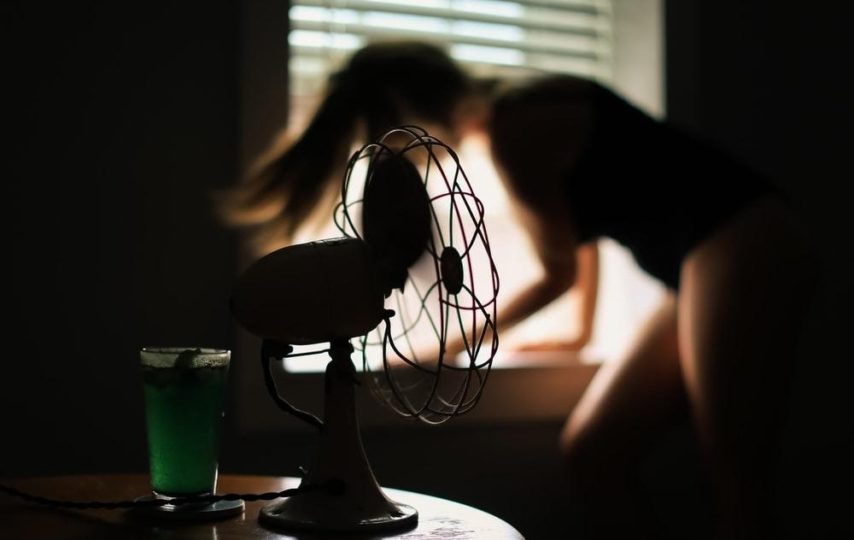In the office or at home, in summer we need fresh air! Pedestal fan, column fan and ceiling fan provide ventilation and freshen the air. With misting for more comfort, ionization for well-being: follow the guide and its advice to choose your fan!
1. The different types of fans
Fans are distinguished into three types: axial fans, centrifugal fans, and bladeless fans.
Blade fans or axial fans
Technically, paddle fans are the simplest. The propeller is directly connected to the axis of the motor which drives it and thus generates an air movement. The power of bladed fans varies from a few watts (W) to more than 200 W for the larger ones. Paddle fans are often on base or on foot, but this type of technology is also used for ceiling fans or large floor fans called ceiling fan (which is often found in workshops or garages).
The propeller size is variable, from a few centimeters to desktop fans Stand over 50 cm in diameter for fans shop or ceiling fans. Usually, paddle fans are relatively noisy.
Pedestal fan or table fan
Perfect for placing on an office or living room table. Their low weight makes them popular nomadic fans. Also in nomadic use, the efficient pedestal fans take up more space but allow the air to be directed over a greater height.
Ceiling fan and wall fan
To be securely installed using a drill and dowels, ceiling fans are to be connected to the home’s electrical supply network.
Air fan
Air fans are very powerful fans designed for large volumes. They are made of steel, take up little space and are placed on the ground.
Column fans or centrifugal fans
Centrifugal fans come from industry. In principle, it is no longer a propeller that generates the air movement but a wheel. This wheel (equipped with blades) rotates in a housing. The expelled air may or may not be ducted. To attach the image to the description, this is the technology used for column fans.
Less noisy than axial fans, centrifugal fans or column fans also consume less energy because the power required for the same volume of air moved is less.
Ideal for a room where silence is essential, the column fan remains limited when it is necessary to cool a large room (even for the most powerful fans).
Bladeless fans
Bladeless fans represent the new generation of fans. It is a relatively complex technology, developed by a famous English bagless vacuum cleaner manufacturer (and since taken over by several brands). They are very quiet and relatively efficient (in terms of volume of air moved) but more expensive than other types of fans.
2. Air flow
Directly linked to the power of the fan, the air flow generated is an important parameter to take into account to be sure that the fan you are going to use is efficient. The air flow rate of the fan is expressed in m3 / h (cubic meters per hour) or in m3 / min (cubic meters per minute).
- For a small fan on a desk stand, 15 m 3 / min is sufficient flow.
- For a living room of 30 m2, on the other hand, rely on a flow rate of 150 m 3 / min for the ventilation to be effective.
- For a workshop, you will find air brushers up to 350 or even 400 m 3 / min.
3. Soundproofing of the fan
A fan, regardless of its type, is always a bit noisy. There is no such thing as completely silent ventilation. Be aware of the noise generated by the fan because depending on your needs this can be annoying. Being cool in a deafening din is not very pleasant!
If your intention is to cool a bedroom, column fans are great because they are relatively quiet. But not all fans are created equal, you have to read the technical descriptions carefully. The noise generated is expressed in decibels (dB) (a 40 dB fan is the maximum threshold) allowed to ventilate a room. Also note that above 60 dB, even in a living room (living room, kitchen, etc.), noise quickly becomes unpleasant.
4. Other comfort options
Depending on your needs, it may be worth choosing a fan with one of the following options.
- Fan programming: The programming option is used to select operating time slots or a delayed start. Convenient for not leaving the fan running all night or for the room to be refreshed when you arrive.
- Fan remote control: A remote control is useful and avoids a lot of travel. In addition to the possibility of turning the fan on and off, the remote control allows you to adjust the speed of the blower.
- Blower speed: On the power modulation side, the vast majority of fans incorporate different blower modes (often ranging from speed 1 to 3). Indispensable for adapting ventilation to the ambient temperature.
- Fan oscillation: The oscillation of the fan head is essential for better air distribution. Most fans oscillate 180 ° however there are fans with 360 ° oscillation.
How to use a fan?
Some complain that even at maximum power, their fan still does not seem to work during the hot weather at 50 ° C. This can come from an error in the choice of the tool, or from a lack of information concerning its use. Here are some tips to get the most out of it, in summer and winter.
Buy a portable model
By buying a portable model, you can ensure you always stay cool anywhere. This type of light and compact fan blows you air on command. You save energy because you only turn it on when you need it and keep it on you while walking around a building or outside, for those with a rechargeable battery.
Cool off in a heatwave with a fan
Start by soaking a cloth or cloth in water. Wring it out and then place it on the running fan. To lower the temperature even further in a given place, get a bowl that you will fill with cold water and ice cubes. Install it in front of the device and you will see that you will feel better after a few minutes.
Choose the right angle of inclination for fixed models or ceiling lights
For a ceiling fan, it is necessary to calculate its angle of inclination according to its place and the configuration of the place to function optimally. Experts recommend a range between 12 to 15 °.
Do not leave it running 24/24 hours and 7/7 days
It is wrong to think that leaving the fan running will cool the interior more. This would shorten its lifespan. Only turn it on when you are in the room. Some motors run for 8 to 12 hours at a stretch, or even 24 hours, but it is always good to be gentle and at the same time save energy. With the Dyson AM06 for example, you scrape up to 40% of kilowatt hours thanks to its motor.
Do not be mistaken in the size of the fan to be installed
The efficiency of a fan depends on the size of the room in which it is placed. For an area of about 36 m² for example, you would need blades 135 cm long to cover it well. On the other hand, for a small room of 7 m², such as a bathroom, 90 cm models will do the trick.
Warm up with the fan in winter
Not all fans have double rotation. To benefit from this option, first make sure that yours can also heat a room. So, when the temperature cools, run the fan, but also check if it is necessary to activate a humidifier for the house, to keep the optimal level of humidity indoors.
Skip maintenance
Choose a specimen equipped with a sealed ball motor if you are concerned about too frequent and tedious cleaning of your equipment. This category requires very little, if any, maintenance. For the others, you will have to dismantle and polish each part regularly.













